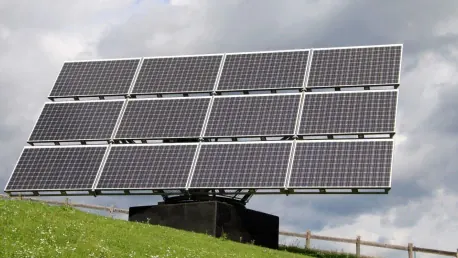The U.S. Treasury has recently finalized its guidance on the technology-neutral 45Y and 48E clean electricity tax credits, which are part of the Inflation Reduction Act, shifting significantly from the previous 45 production tax credit and 48 investment tax credit. These newly implemented credits, which take effect immediately, have been designed to promote a diverse array of zero-emissions technologies such as wind, solar, hydropower, marine and hydrokinetic energy, geothermal energy, nuclear energy, and waste energy recovery. Experts have widely praised these credits, noting their crucial role in advancing clean energy technologies.
The Technology-Neutral Aspect of Tax Credits
Promoting Innovation and Certainty for Investors
One of the most notable aspects of these newly issued tax credits is their technology-neutral nature, which aims to foster innovation and provide long-term certainty to investors and industries. Brad Townsend from the Center for Climate and Energy Solutions highlighted that these credits extend a much-lengthened runway until at least 2032. This prolonged period is crucial for substantial investments and helps address long-standing permitting challenges that have hindered the growth of clean energy projects. This shift in policy alleviates previous constraints that industries faced, promoting a more stable investment environment.
The Solar Energy Industries Association and the American Council on Renewable Energy have also lauded these changes. Executives from both organizations emphasize the critical role these credits play in boosting the production and utilization of U.S.-made solar components, thereby supporting American jobs. By investing in homegrown technologies, the United States can enhance its energy independence and significantly reduce its carbon footprint while fostering economic growth and job creation within the renewable energy sector.
Impact on the Offshore Energy Industry
The newly finalized guidance is expected to have a substantial impact on the offshore energy industry, specifically targeting offshore wind projects that currently have permits but are yet to commence construction. Anna-Marie Laura from the Ocean Conservancy noted that the finalized guidance would act as a catalyst for these projects, providing essential financial incentives that will jumpstart development. The tech-neutral nature of these credits also opens new avenues for emerging technologies like wave and tidal energy, which could be particularly beneficial for remote and island communities that have previously struggled to access sustainable energy sources.
Furthermore, the finalized guidance ensures that innovative offshore energy projects receive the necessary financial backing to move from the planning stages to actual construction. By providing this support, the guidance effectively encourages the development of a more diverse and resilient energy grid, capable of accommodating emerging technologies and addressing the unique energy needs of different regions.
Broader Trends and Future Impact
Expanding Current and Emerging Technologies
The overarching trend is that the finalized 45Y and 48E clean electricity tax credits will not only provide robust support for current renewable technologies but also pave the way for unforeseen innovations. Brad Townsend observed that by eliminating the need for industries to engage in extensive lobbying efforts for new technologies, this legislation facilitates the advancement of next-generation energy solutions like advanced nuclear reactors. Unlike previous legislative frameworks, the tech-neutral credits offer a more inclusive approach, ensuring that a broad spectrum of clean energy technologies can thrive.
Analyses from the Rhodium Group suggest that these credits have the potential to significantly boost U.S. clean energy capacity. Estimates indicate that these credits could add between 146 GW to 308 GW of clean energy capacity to the U.S. grid by 2030. This projected increase underscores the transformative potential of these tax credits, not just in terms of energy production but also in reducing greenhouse gas emissions and promoting sustainability.
Economic and Environmental Benefits
The U.S. Treasury has recently finalized its guidelines on the technology-neutral 45Y and 48E clean electricity tax credits, which are key components of the Inflation Reduction Act. These credits represent a notable shift from the prior 45 production tax credit and the 48 investment tax credit. Effective immediately, the new credits are tailored to encourage a broad range of zero-emissions technologies. These include wind, solar, hydropower, marine and hydrokinetic energy, geothermal energy, nuclear energy, and waste energy recovery. Industry experts have largely commended these credits, highlighting their importance in propelling clean energy technologies forward. The change is seen as a strategic move to diversify the clean energy sector and stimulate innovation and investment in renewable energy sources. Furthermore, these tax credits align with the broader goals of reducing carbon emissions and mitigating climate change, thereby fostering a more sustainable energy landscape for the future.









